Are succulents poisonous to cats? Succulents are a roaring trend at present. It makes sense. Plants add joy and cheer to life. However, everyone has too much going on these days. For many, low-maintenance plants are the perfect balance of joy without added stress and anxiety. Unfortunately, that balance is ruined if succulents are poisonous to your cat. Can cats and succulents co-exist?
Some succulents can be poisonous to cats and other pets. Succulents to avoid are Aloe Vera, Euphorbia, Kalanchoes, and Crassula Ovata. Thankfully, there are some excellent pet-friendly succulent options such as Hen and Chickens, Haworthia, Christmas cactus, and Burro’s Tail.
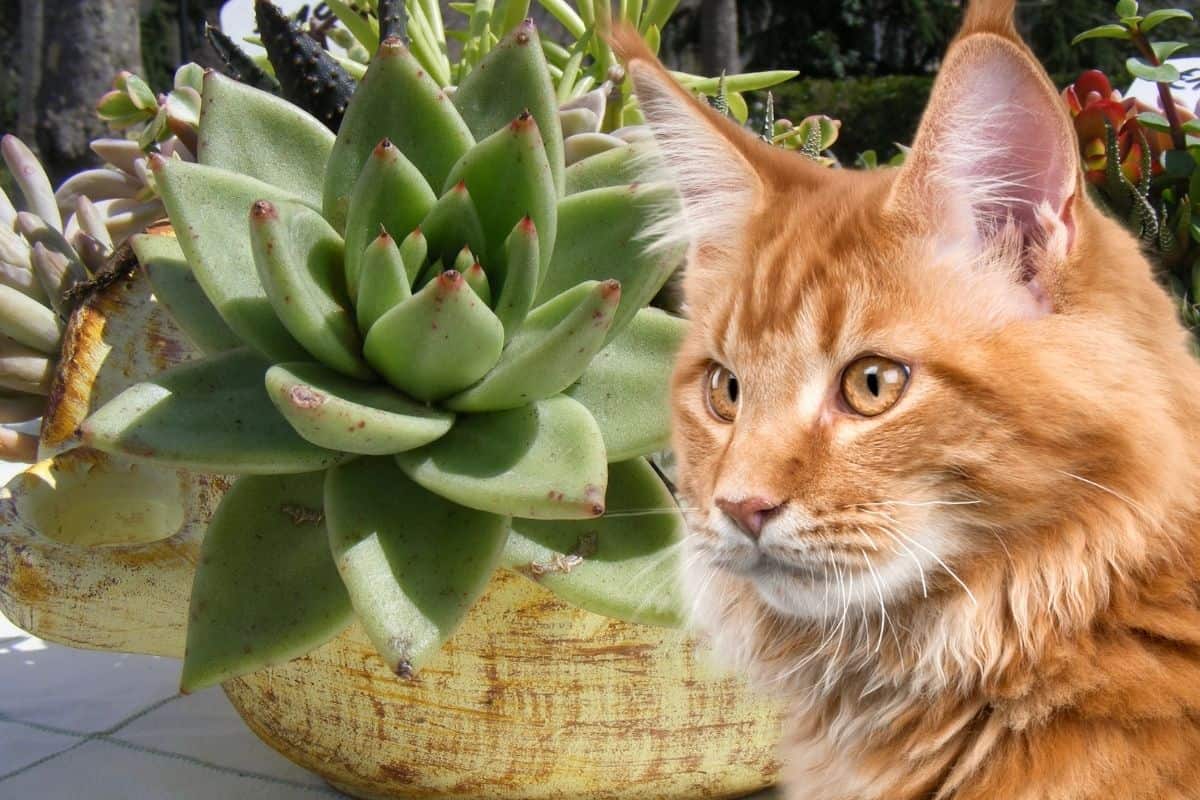
You don’t have to choose between your darling fur friend and your succulents. All you need to do is identify the ones that need to be rehomed, keep the safe ones, and ensure any new additions to the succulent collection are also cat-friendly. Thus, let’s look at what needs to leave your life and what you can welcome in.
5 Popular Succulents That Are Not Cat Friendly
Cats are curious, and vet bills are expensive. Thus, it is always a good idea to know the names and varieties of the plants on your property. Even “safe” plants can make animals feel ill if they eat too much of them, just like you might feel after Thanksgiving. But it is good to know which plants are the biggest dangers for your cat so you can avoid them entirely.
1. Aloe (Aloe Vera)
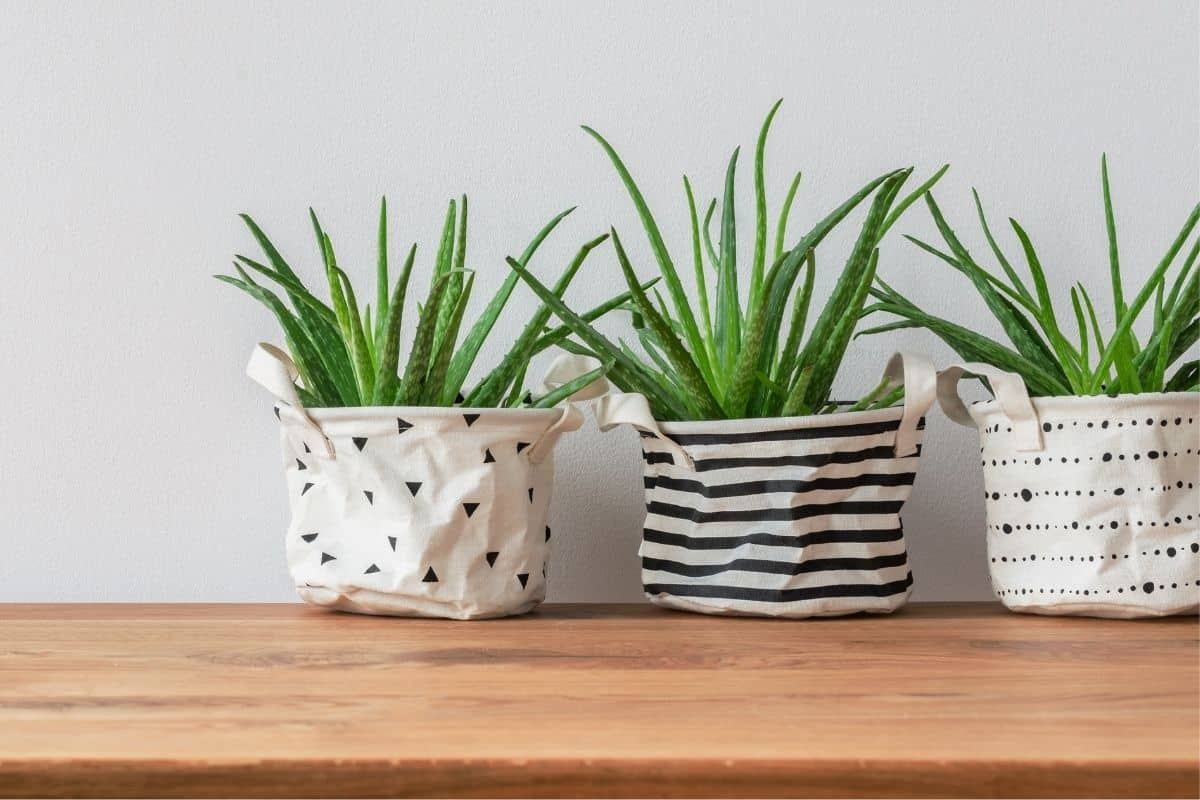
Aloe Vera is the most famous of the over 600 aloe species in the world. They are striking plants, and the gel is frequently used as a topical treatment. Unfortunately, aloe plants are not suitable for kitties. The problem is due to saponin, a chemical component in aloe. Ingestion can cause cats nausea, vomiting, diarrhea, abdominal pain, skin irritations, and lethargy.
2. Jade plant (Crassula Ovata)
Crassulas are a genus of succulents that originate from Southern Africa. Of the over 200 species, Crassula Ovata is the most well-known. Its common names include Kerky bush, Jade Plant, and Pink Joy.
Crassula Arborescens is another popular species, also known as Silver Jade Plant, Chinese Jade, and Money Plant).
It doesn’t appear to be clear why the plant makes cats and dogs ill. But somehow, it makes cats appear drunk, including the vomiting, lethargy, and lack of coordination as many humans get after a bender. Some cats don’t get quite so dramatic and only have a slight upset of a tummy. It really depends on how much the animal ingested.
3. Pencil cactus (Euphorbia Tiruacalli)
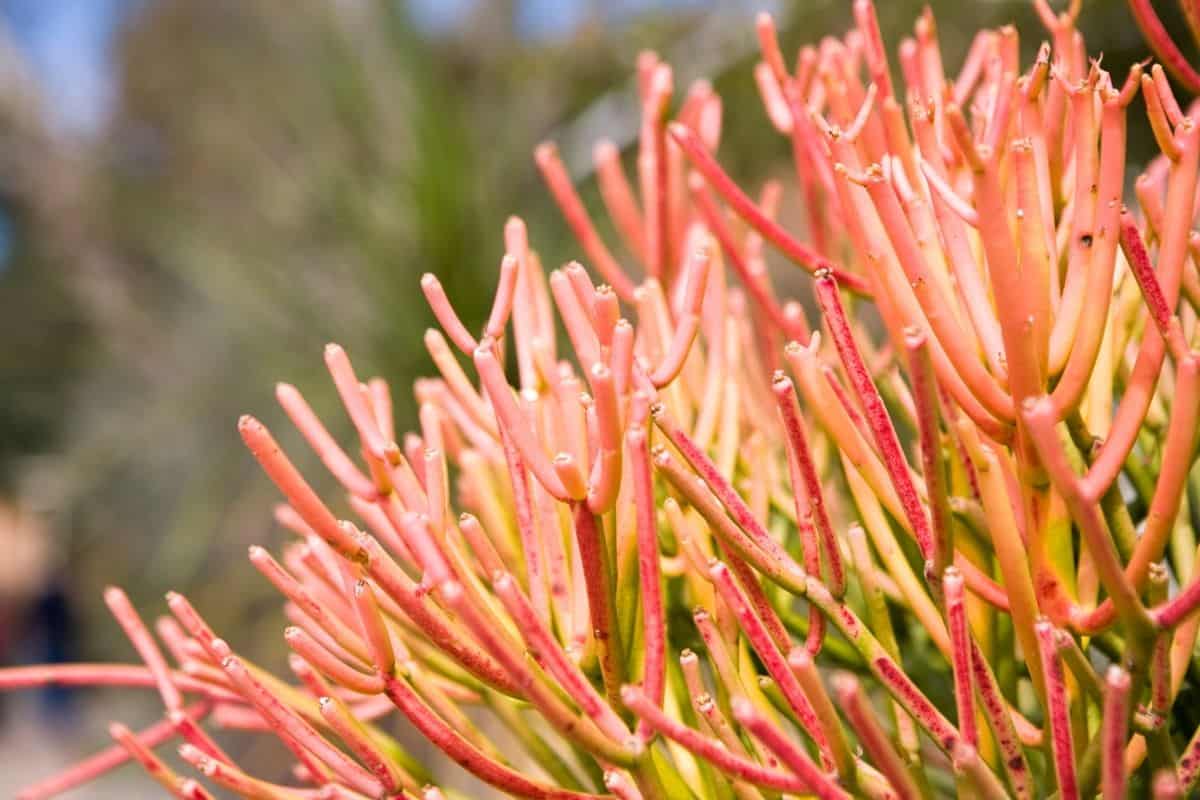
Euphorbia Tiruacalli is part of a big succulent group with over 2,000 species. Not all species harm cats. For example, Euphorbia Milii can be bad for dogs and humans but isn’t listed as a danger for felines.
Euphorbia Tiruacalli, however, impacts cats along with dogs and horses. Its common names include Firestick, Pencil Tree Plant, and Pencil Cactus.
Thankfully, ingestion of the plant doesn’t usually produce severe symptoms. But the kitty may vomit a bit and experience irritation in and around the mouth and the stomach.
4. Mother of Thousands (Kalanchoes Daigremontianin)
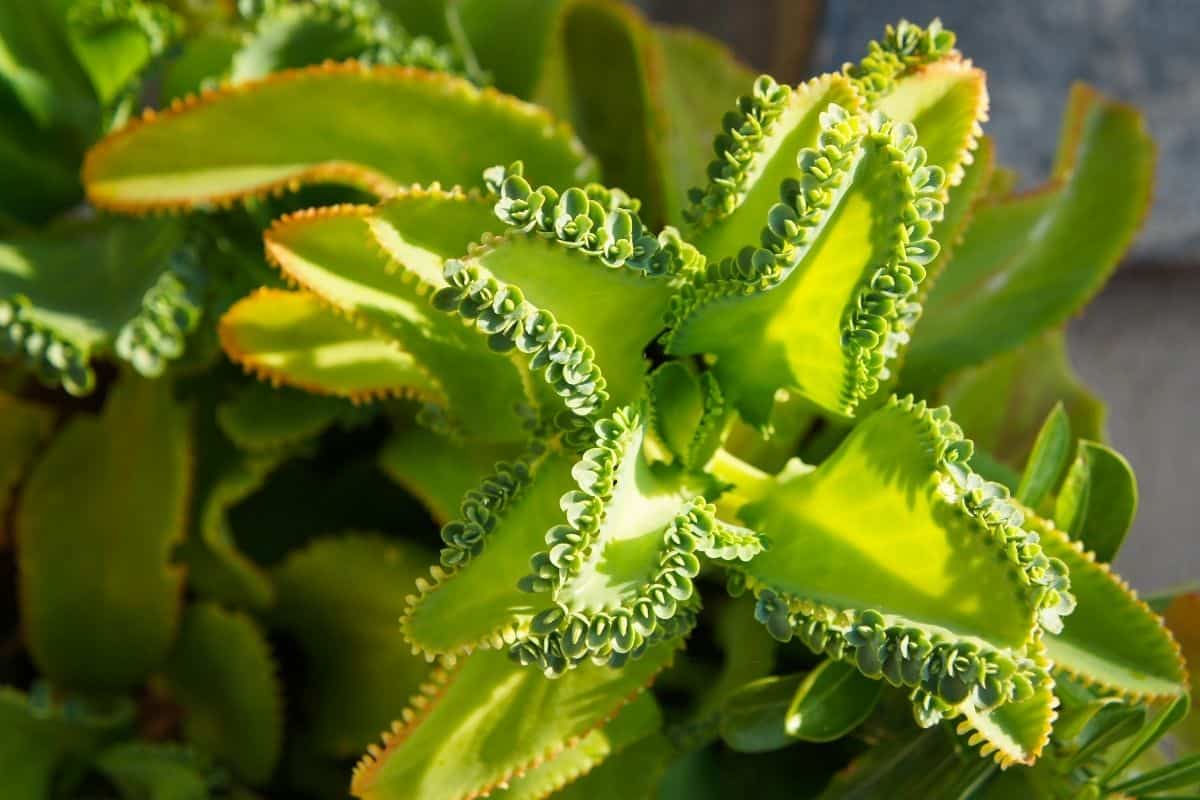
Kalanchoes are a group of 120 species that have roots in Madagascar. It is known that two are definitely toxic to cats: Kalanchoe daigremontianin and Kalanchoe Tometosa. Kalanchoes Daigremontianin’s common names include Alligator Plant, Mexican Hat Plant, and Mother of Thousands. Kalanchoe Tomentosa is often called Panda Plant.
Both varieties can be fatal, although it isn’t common. For example, it takes large amounts of the Kalanchoe Tomentosa to kill. Other symptoms include vomiting, diarrhea, and lethargy. While rare, Kalanchoes Daigremontianin can potentially cause issues such as abnormal heart rate, seizures, and tremors.
5. String of pearls (Senecio Rowlevanus)
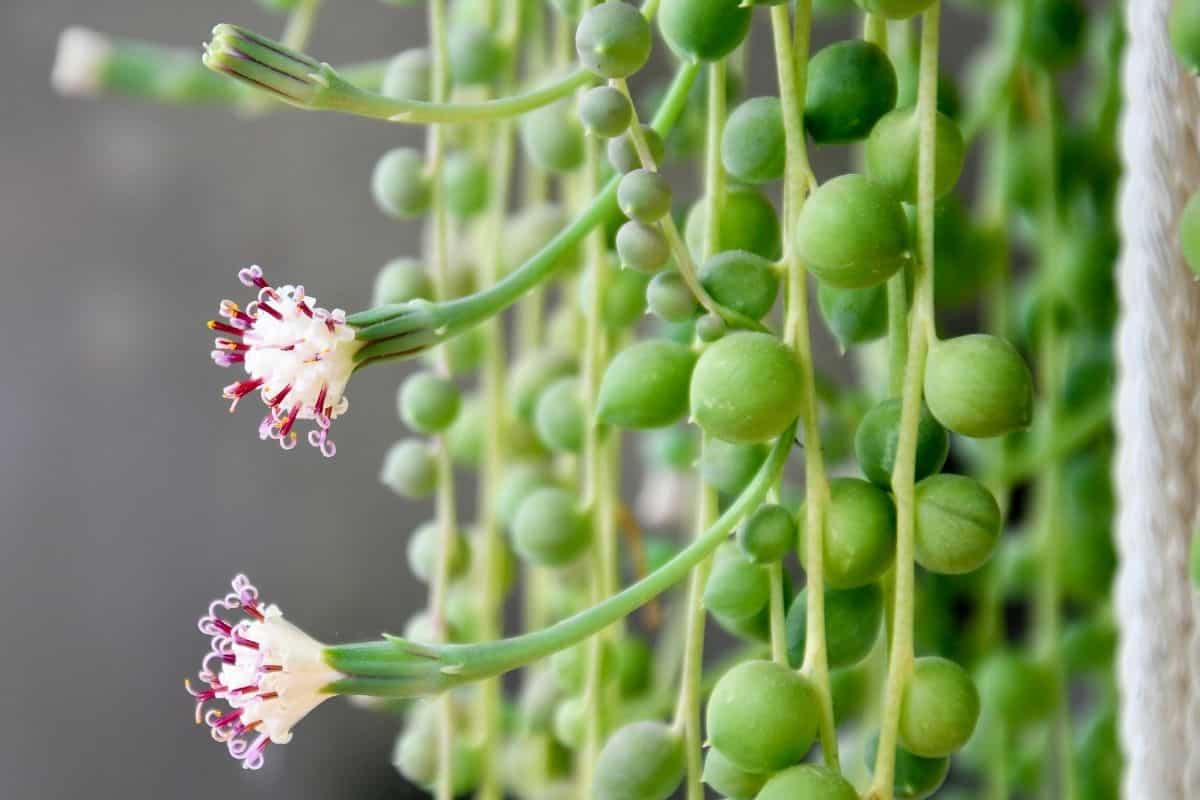
Senecio Rowleyanus is another South African plant. The common names include String of Pearls, String of Peas, and String of Beads. People like them because they trail nicely out of a hanging basket.
Cats don’t like them because the sap can irritate their skin. In addition, ingestion of the plant can make a kitty vomit, drool, have diarrhea, and experience lethargy.
5 Succulents That Are Cat Friendly
Rest assured, you don’t have to decide between your cat and succulents. There are plenty of cat-friendly varieties out there. Here are five to consider.
1. Burro’s tail (Sedum morganianum)
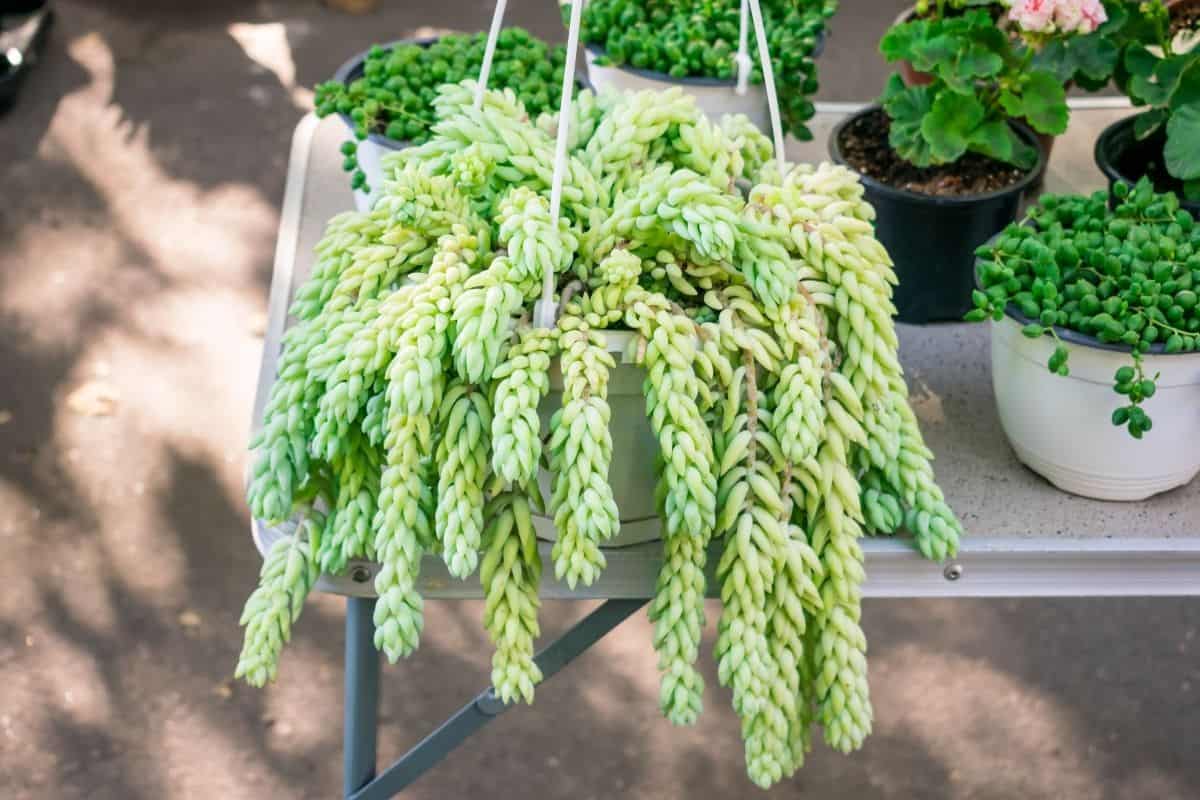
Burro’s Tail is a great alternative to those that love String of Pearls / Peas / Beads. It flows out of baskets making it wonderful to hang or, for some, used as “hair” out of certain “face” planters.
Another wonderful quality about this plant is it seems to thrive with neglect.
2. Christmas cactus (Schlumbergera)
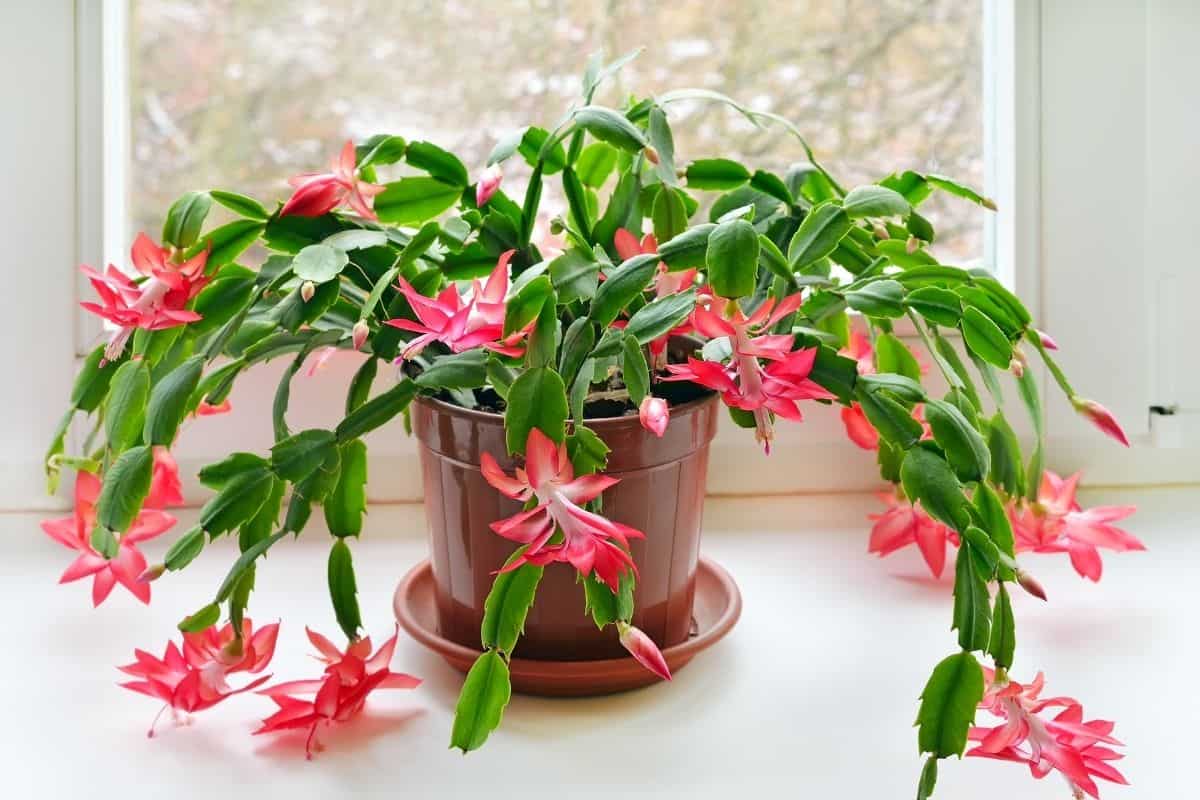
Christmas cactus is a favorite of many and can often be spotted in shops and nurseries in the run-up to the big jolly holiday. Unlike most succulents and cacti, these are not a hot-and-dry sort of plant. It’s a more temperate plant that prefers indirect bright light, enjoys humidity (great for bathrooms), and needs a wee bit more watering than other succulents.
3. Haworthia (Haworthia Margaritifera)
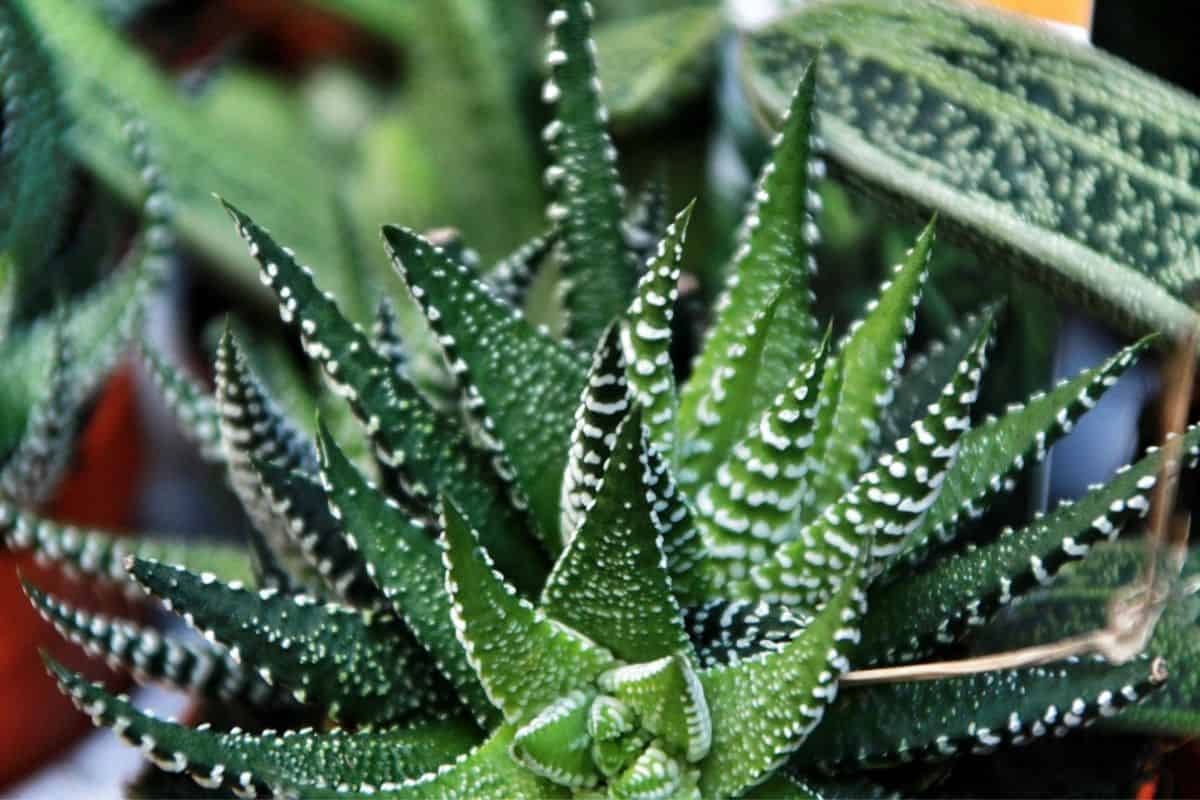
Haworthia is an excellent genus from South Africa for Aloe lovers. Like Aloes, Hawarthia comes in various species. Unlike Aloes, they are safe for pets.
A big favorite is the Zebra Cactus, which has a similar shaped spiked leaf to Aloe Vera. Haworthia Margaritifera is another striking one that has that flamed-Aloe-look with white “pearls” on its leaves.
4. Hens and chicks (Sempervivum tectorum)
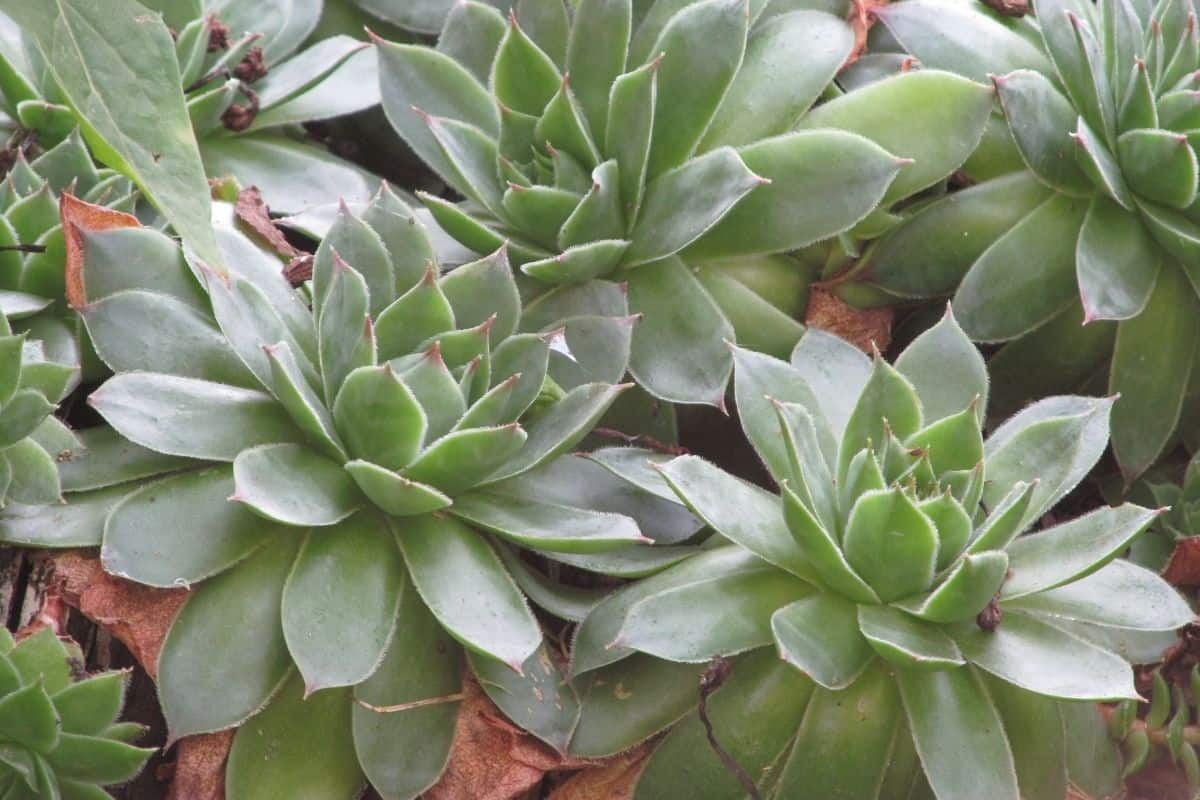
Hens and chicks is a common succulent for the home. There are many varieties, but the most popular has a pleasing, mini-Aloe-star type shape to it. They get their name because the “mommy” plant will send offshoots, and these will pop up nearby as “babies.” These succulents are incredibly easy to care for, which makes them low stress to own, too.
5. Ponytail palm (Beaucarnea)
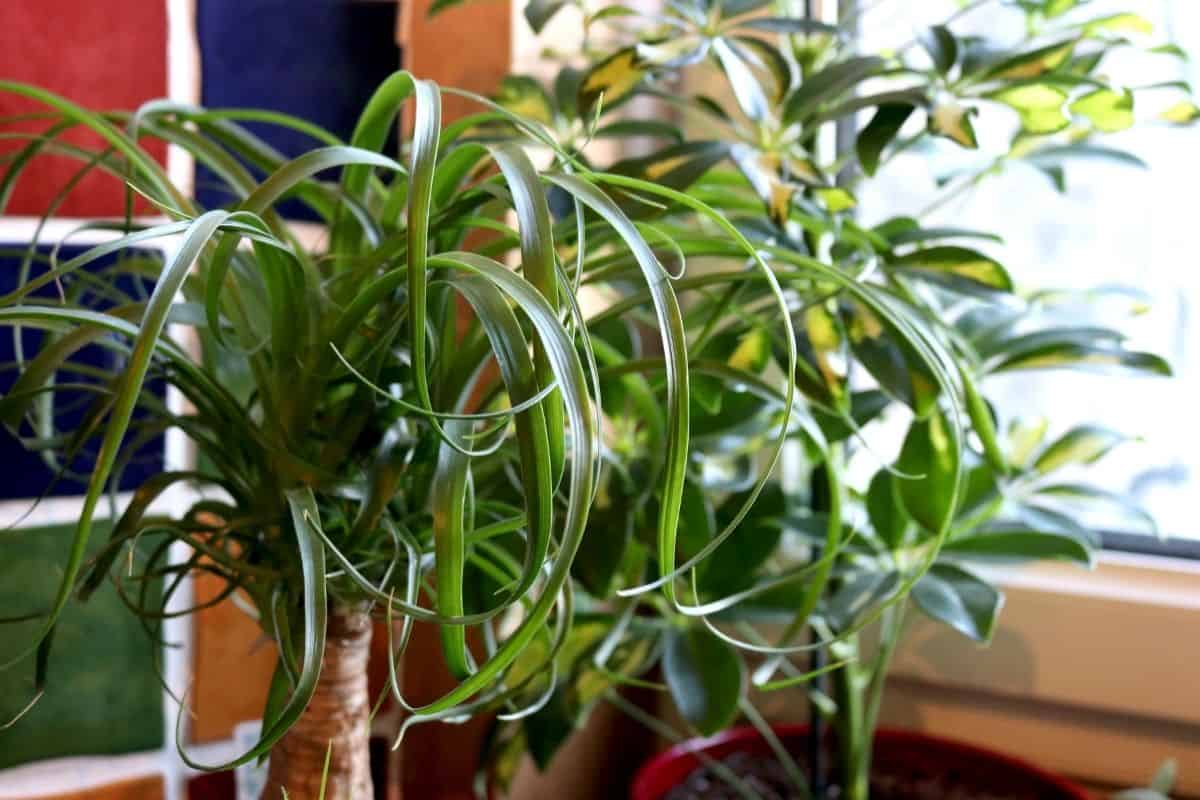
Ponytail palm, also called elephant’s foot, doesn’t look like a stereotypical succulent, but that’s part of the fun. These faux palms are hardy and difficult to kill while looking like a houseplant. Win-win!
Here’s a list of more cat friendly plants.
What To Do If Your Cat Eats A Toxic Succulent
If your cat ingests a succulent and is ill, call the vet and take a piece of the plant along with the cat to the clinic. Try to write down the proper scientific name of the succulent and all the common names you can think of, as this will help your vet identify the best treatment.
If you are living in the United States, two great numbers to know are:
Pet Poison Helpline: (855) 764-7661
ASPCA Animal Poison Control: (888) 426-4435
Are Succulents Poisonous To Cats? Conclusion
Cats and succulents can live safely together. It just takes a little research to ensure your succulents are non-toxic varieties. Even if you like a specific look of a succulent, such as an Aloe, there is often a non-toxic species that will resemble it, like the Haworthia.
There are more plants that are toxic for pets.
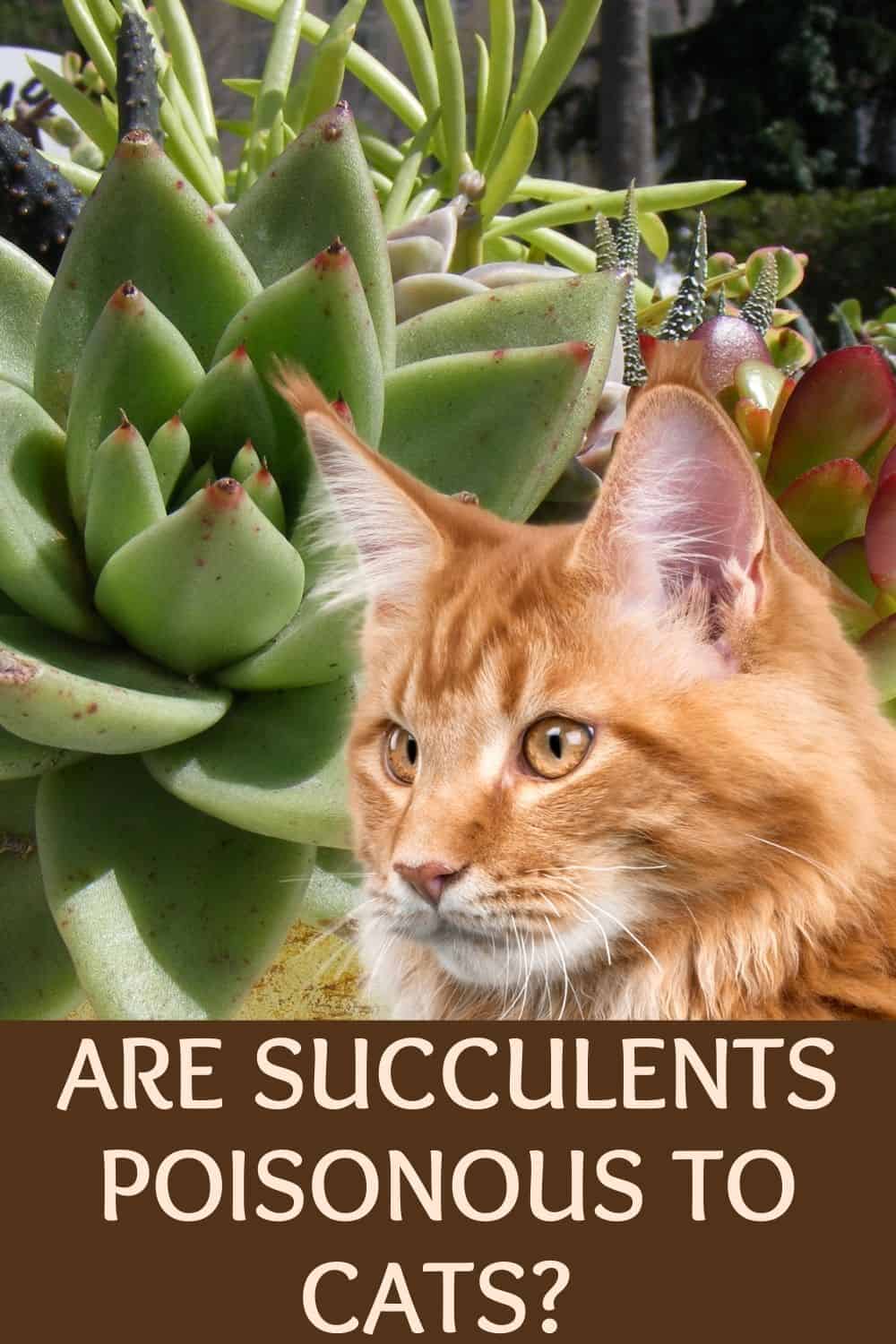

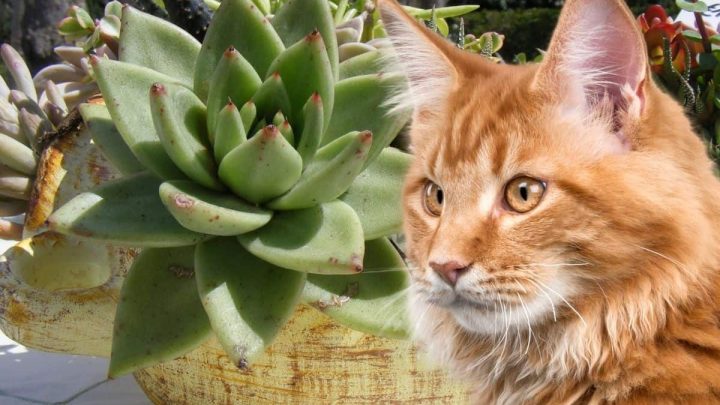


How Often Should I Water My Succulent?
Sunday 15th of January 2023
[…] are succulents poisonous to cats? […]